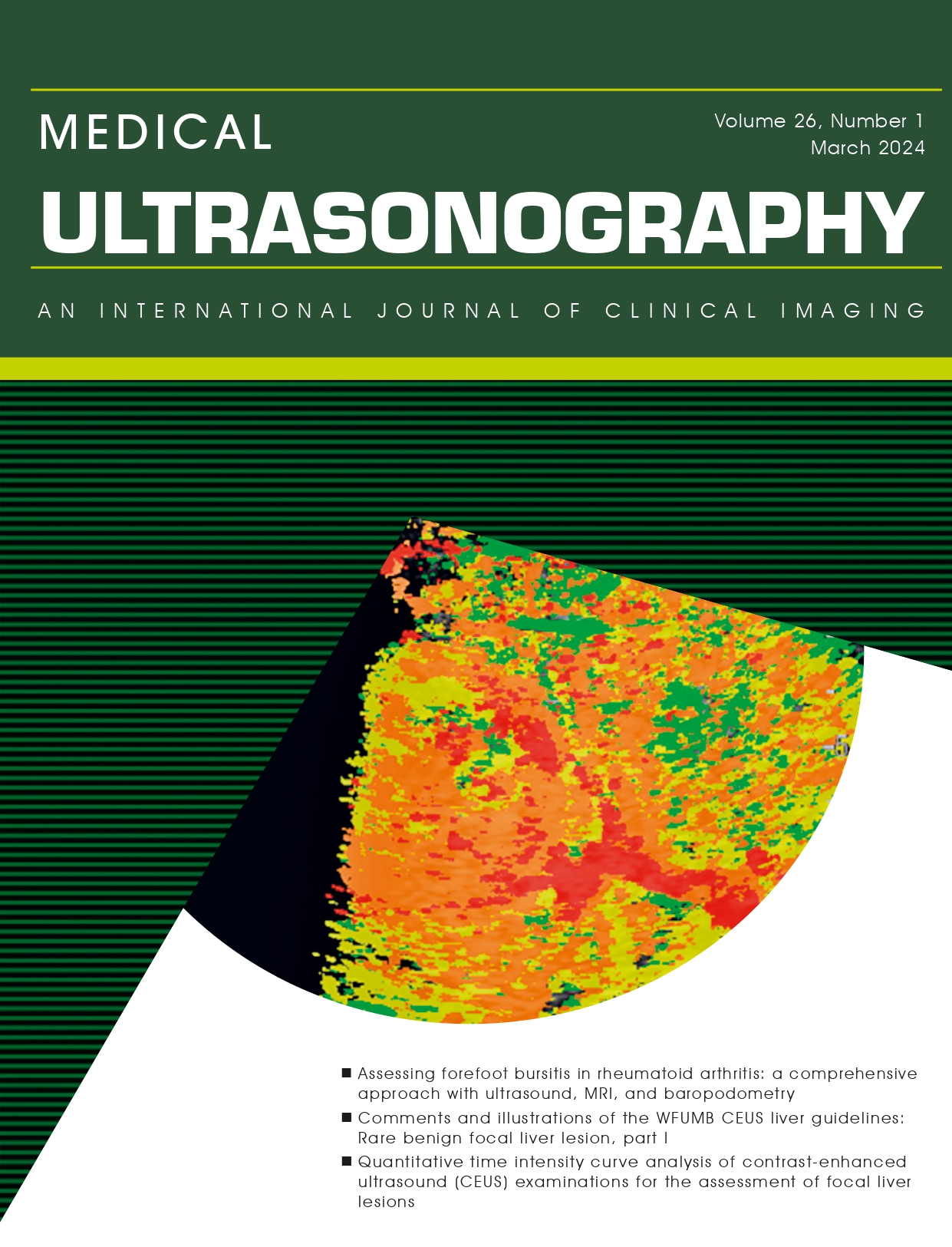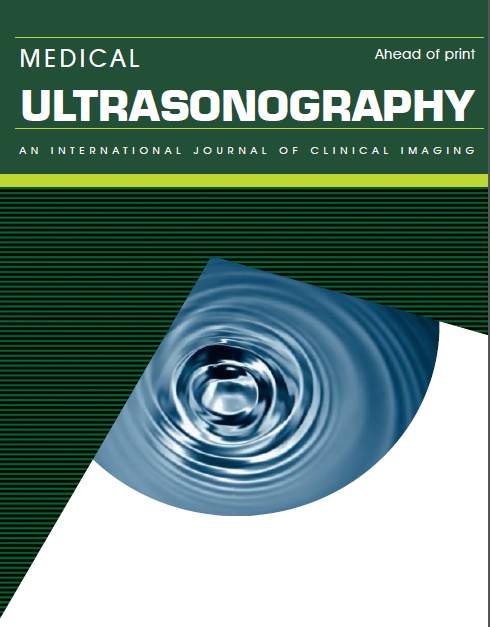Qualitative strain elastography – strain ratio evaluation - an important tool in breast cancer diagnostic
Abstract
Aims: To assess the quality of real time elastography as a differential diagnosis tool for breast nodules and to compare it with standard ultrasonography. Material and methods: In this prospective study we enrolled 174 patients in which 174 dominant breast nodules were considered for the final diagnosis. The results of ultrasonography and real time elastography, both qualitative and quantitative, were compared with pathology findings from the biopsy specimens. Results: Pathology examinations determined 102 nodules were benign and 72 malignant. Qualitative elastography had a better diagnostic performance (82.4% sensitivity and 81.9% specificity) than ultrasonography plus Doppler evaluation (70.3% sensitivity and 73.5% specificity). Quantitative elastography, assessed using the fat-to-lesion ratio, was a good discriminant for malignancy (AUROC = 0.93, p < 0.001). Our results pointed to an optimal threshold for malignancy of > 4.88; by using this threshold, the diagnostic reliability of the fat-to-lesion ratio was better than both ultrasonography and qualitative elastography (86.5% sensitivity and 90.4% specificity). Conclusion: Real time elastography is superior to ultrasonography in diagnosing malignant breast nodules. The evaluation of nodules using a fat-to-lesion ratio was a better discriminant for malignancy than qualitative elastography.
Keywords
DOI: http://dx.doi.org/10.11152/mu.2013.2066.182.bcd
Refbacks
- There are currently no refbacks.




